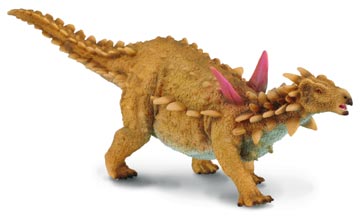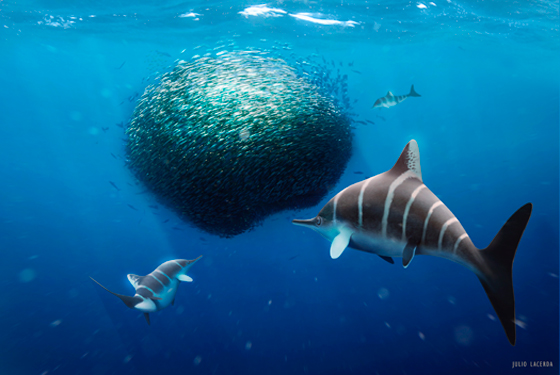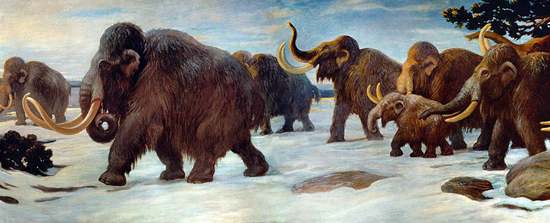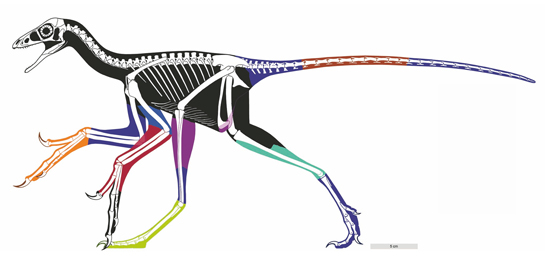No Dinosaur Fossils In Ireland?
One of the puzzling questions that we get asked when we get emailed or written to by people from the “Emerald Isle” is why there are no dinosaur fossils in Ireland? Today, being St. Patrick’s day, seems an appropriate date in the calendar to tackle this issue. Most people are familiar with the story of St. Patrick banishing all snakes (serpents) from Ireland. The story has passed into legend as much of the life and works of this former slave is unknown. Even the dates of when he lived are debated (around 400 AD), although some accounts relate that this pious man lived until he was over 100 years old.
Dinosaur Fossils
The story regarding the serpents being driven out of Ireland may be more symbolic than factual. Scientists are fairly certain that there were no snakes present in post glacial Ireland and the “serpents” referred to may actually be a reference to heathen druids who were banished by St. Patrick. However, we do get asked by dinosaur fans, why when there are lots of dinosaur fossils in England, there are virtually none in Ireland.
This is quite a complex problem. It is true that the geology of Ireland and the United Kingdom is similar and indeed these land masses have been proximal to each other for a large part of geological history. However, it is really a question relating to the types of exposed strata in Ireland compared to the rest of the British Isles. There are many sites in Ireland where fossils can be found, but these are mainly invertebrate or plant remains dating from the Palaeozoic.
This is true for the rest of the British Isles, vertebrate fossils are much rarer. However, in southern and eastern England sedimentary strata from the Mesozoic is exposed and this has led to the discovery of a number of different dinosaur genera in England, with dinosaur fossils being found in the exposed clay, sandstones and limestones.
The geology of Ireland is much more similar to the adjacent rocks of Scotland and northern England where very few outcrops of Mesozoic rocks occur. In Northern Ireland there are many outcrops of highly metamorphosed rocks with most of the fossils that these rocks may have contained being destroyed as the rocks changed and buckled under heat and pressure.
There is also a substantial amount of volcanic igneous rock exposed, such as the 65 million year old “Giants Causeway” that can be seen on the coast of Northern Ireland. The dominant rock formations in terms of exposed area date from the Carboniferous, many millions of years before Dinosauria. However, in exposed limestones, shales and sandstone fish fossils, plants and invertebrate fossils can be located.
There are some dinosaur fossils associated with Ireland. One of our team members recalls reading about a set of dinosaur footprints that had been found and some Early Jurassic dinosaur bones that had been discovered in County Antrim. For much of the Mesozoic, Ireland was underwater so the only dinosaur fossils that could be found are those animals unfortunate to have been washed out to sea and deposited in marine strata (similar fashion to Dorset Scelidosaurus).
Scelidosaurus – A Potential Dinosaur From Ireland
The CollectA Deluxe range of scale models included a Scelidosaurus replica, to view this excellent model range: CollectA Deluxe Prehistoric Life.
Ichthyosaur and plesiosaur fossils have been found in northern Ireland, again from exposed strata on the coast of County Antrim, although articulated fossil elements are extremely rare.







Interesting article for sure, shame that the mesozoic rocks are so sparse and in low numbers also in my research on Metriacanthosaurus and the land that was above water in the oxfordian stage of the late Jurassic I find it probable to suggest that perhaps the island of which the type specimen for Metriacanthosaurus originated from may have been the island that included Ireland as a whole (by this I mean Northern and Republic) and the “Tail end” of England so to speak AKA Exmouth and further back as that is the closest island to the type specimens locality meaning if more Metriacanthosaurus specimens are to be found in the future I think Palaeontologists and fossil hunters should start looking in the “Tail end” of England and Ireland however reading this article it seems this may become quite difficult to do that but our knowledge of Metriacanthosaurus can’t expand if no one tries.